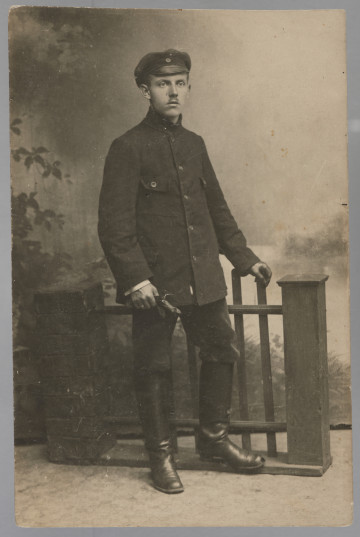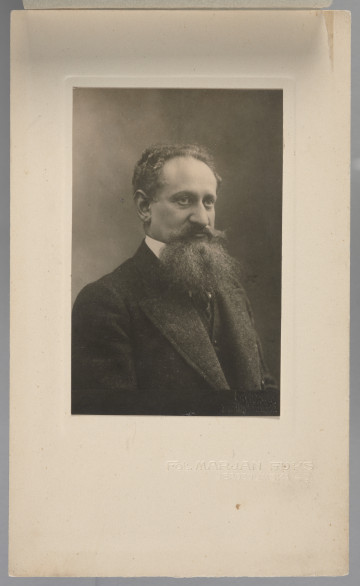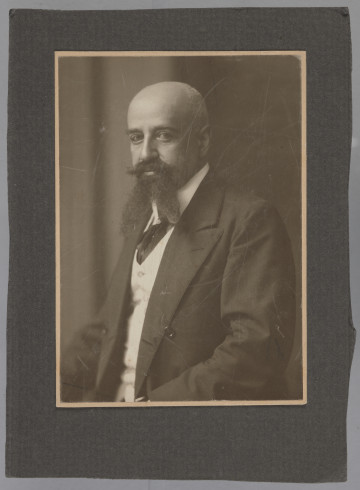
Photograph
1. ćwierć XX wieku
Museum of the history of Polish Jews
Part of the collection: Portrait painting
The Kościuszko Uprising - the first Polish national uprising - was an attempt to preserve the independence of the state before the last partition. Insurrection episodes and images of participants were depicted by: Jan Piotr Norblin, Aleksander Orłowski, Jan Bogumił Plersch, Michał Stachowicz, Józef Peszka, Kazimierz Wojniakowski, Franciszek Smuglewicz. Apart from Tadeusz Kościuszko and Bartosz Głowacki, insurrectionary iconography has one more important hero. We are talking about the figure of kosynier, who entered the canon of the national iconosphere as a symbol of the participation of the people in the fight for independence. Thanks to Grottger's cartoons, Chełmoński's visions of Racławice, Matejko, Styka, Rosen, Kossaks and Wyspiański, the theme gained outstanding interpretations.
The picture of a soldier in peasant clothes, with a scythe in his hand, personifying the peasants rallying to battle under the slogan "Żywią i bronią" [They Feed and Defend], is depicted on a drawing by Władysław Czachórski. It was probably made according to Vernier's graphics, from Karol Forster's work La Pologne (Paris, 1840).
The history of kosynierzy is linked to the Kościuszko Uprising. On the order of the chief, the landowners of Kraków put up peasant troops, the so-called Krakow militia, at their own expense. Their weapons were scythes, so they were called "kosynierzy". The prominent architect and military officer Piotr Aigner wrote a manual entitled Krótka nauka o kosach i pikach [A Short Learning of Scythes and Peasants] for training and commanding this formation. Kosynierzy fought in the insurrection, both uprisings and other military campaigns in Poland.
Branches of the Krakow militia were formed in difficult conditions, without funds or equipment. Eventually, it was ordered to be "fully clothed in whatsoever uniforms". The predominance of peasants from Małopolska resulted in the Kraków folk costume becoming the uniform of the Kraków infantry and kosynierzy. The outfit consisted of a white robe, belt, brown shoulder guards, red cornet or Tyniec's magierka cap, shoes with uppers. Horned caps, navy blue jackets with green epaulets, trousers made of white cloth were the uniforms of the grenadiers of Krakow, the famous kosynierzy of Raclawice. A drawing by Czachórski shows such a grenadier. With a scythe in his right hand, an axe at his belt, and a flag flying, he might have intoned Mazur wojenny [The War Mazurek]: "The swift scythe cuts bravely / With it we'll wipe our enemies' noses / Hey brothers! In God's name / God will help us".
Bożena Kasperowicz
Author / creator
Dimensions
cały obiekt: height: 11,2 cm, width: 20 cm
Object type
drawing
Technique
drawing technique
Material
paper, pencil
Creation / finding place
Owner
The National Museum in Lublin
Identification number
Location / status

1. ćwierć XX wieku
Museum of the history of Polish Jews

1910 — 1919
Museum of the history of Polish Jews

non post 1939
Museum of the history of Polish Jews
DISCOVER this TOPIC
Castle Museum in Łańcut
DISCOVER this PATH
Educational path